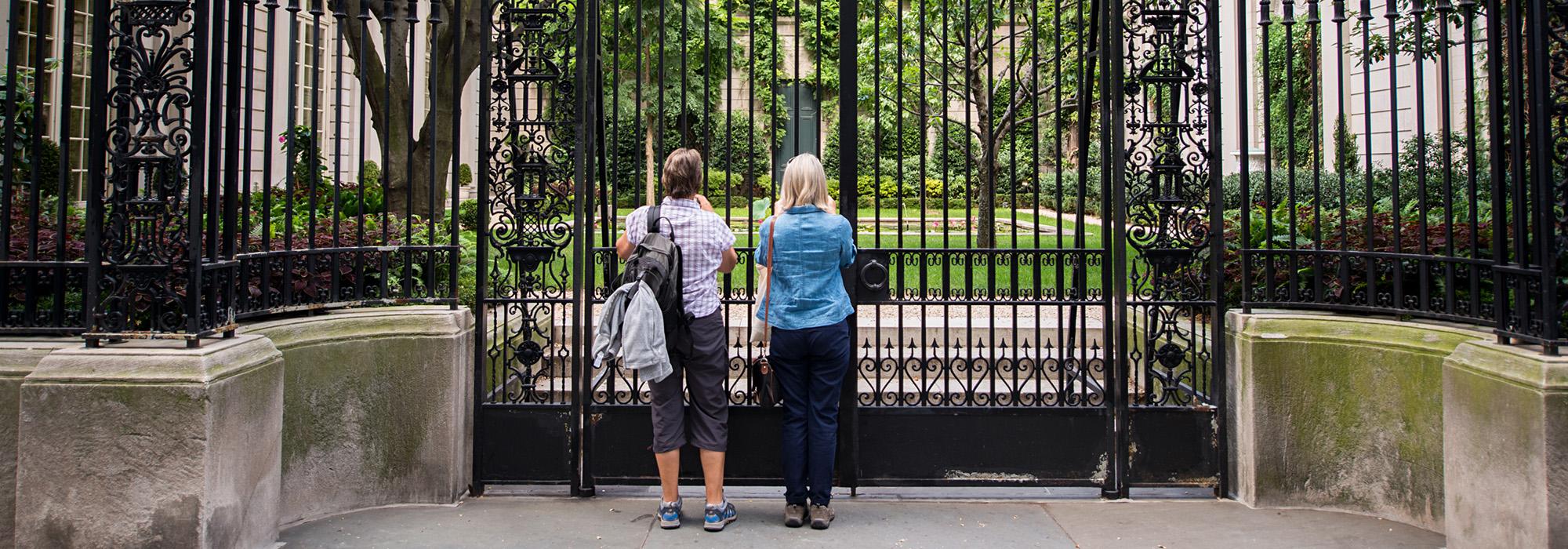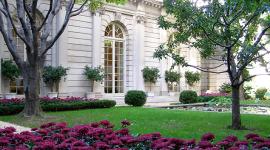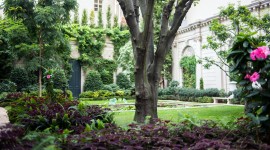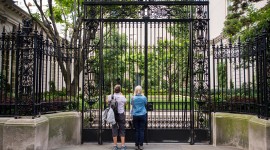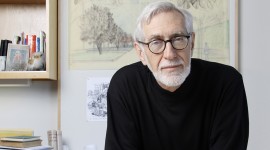Mac K. Griswold Appeals to Save the Frick’s Page Garden
EDITOR’S NOTE: On June 24, 2018, landscape historian Mac K. Griswold sent the following letter to the New York City Landmarks Preservation Commission (LPC) regarding the revised proposal (dated June 26, 2018) for the expansion of the Frick Collection in Manhattan. The proposal, which would significantly diminish the character of the Russell Page-designed viewing garden, is scheduled to come before the LPC again on June 26, 2018.
June 24, 2018
Frederick Bland, Vice Chair
New York City Landmarks Preservation Commission
One Centre Street, 9th Floor
New York, NY 10007
Re: 1 East 70th Street and 10 East 71st Street; The Frick Collection proposed expansion
Dear Vice Chair Bland,
Imagine the Fragonard Room at The Frick Collection, the priceless paintings of “The Progress of Love” without their blue distances, without their entirely imaginary trees. Blank out those trees: they are only clouds or towers of paint, feather dusters of dark and light. They are not important to the story the paintings tell, are they? But we believe in them as trees, as distance. What we feel about these distances and this rococo vegetation—is it purely imaginary or unimportant? No, the feeling these “backgrounds” deliver actually matters, carries import.
Colin Bailey, now the director of the Morgan Library & Museum, and the former Deputy Director and the Peter Jay Sharp Chief Curator at the Frick, delivered a talk in 2013 about the newly restored Fragonard room, and mentioned the sense of security and peace that the last painting in the original series, “Love Letters,” offers a viewer. Probably not until the very eloquent Bailey raised the idea were many of us aware of the rounding effect that those blobs of paint, er, trees, had on us all. A culmination.
In the viewing garden that Russell Page created at the Frick, the great English landscape architect presented us with the same sort of all-important trompe l’oeil distance in the form of an architectural device. Along the north wall of the garden stands a deep but almost invisible stone box planted to suggest—to give to any passerby— a garden beyond the garden. How do we define a garden, in fact? Don’t we define it as much by its imagined space as by its “real” space? It’s a very subtle ploy. Only when that architectural device has vanished, as it threatens to do in architect Annabelle Selldorf's otherwise fine expansion proposal, will we recognize what we have lost.
Fragonard’s series escaped the French Revolution to be brought to America by J.P. Morgan and then honored with its own room by Henry Clay Frick—two men who knew a thing or two about art. Please honor and protect the entirety of Russell Page’s garden, the work of a great artist that now runs the risk of mutilation, as the Frick has honored the integrity of Fragonard’s suite of paintings.
In these strange political times what could be of more value than a respite, a vista, a certainty of peace—however imaginary!— in this garden.
Yours truly,
Mac K. Griswold
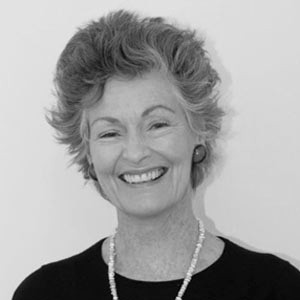
Mac K. Griswold is a renowned landscape historican and currently serves as a member of the Stewardship Council at The Cultural Landscape Foundation. She has previously served on TCLF's Board of Directors and is the author of Pleasures of the Garden, Images from the Metropolitan Museum of Art (1986), The Golden Age of American Gardens: Proud Owners, Private Estates, 1890-1940 (1991), and The Manor: Three Centuries at a Slave Plantation on Long Island (2013).



